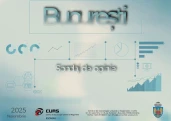Stashes of mediaeval iron weapons and agricultural tools have been discovered by a teacher in a forest located in the small town of Plopu, Prahova County, that include pieces of military equipment.
According to a social media post on Wednesday by the Prahova County Museum of History and Archaeology, the stashes were identified by teacher Virgil Nitu, from school 1 in Mizil, who notified the Directorate for Culture and the Museum of Ploiesti.
"Following this notification, an archaeological assessment was carried out at Podul Rotarilor, Rotarilor Valley, in the small town of Plopu, Prahova County. The assessment revealed that there are over 80 weapons and agricultural tools specific to the early Middle Ages (8th-10th centuries AD), amassed in four distinct stashes. Probably the most spectacular finds in these stashes are pieces of military equipment that include several battle axes, a spearhead and a sword."
Agricultural and craft tools were also found here, including several sickles, plough knives and coulters, buckles, barks, knives and links, and also an anvil, a ladder and a rake.
Also, in the soil that covered the four stashes, ceramic shards were identified that support the idea that there was a previously unknown mediaeval settlement in the area.
"The four stashes of weapons and agricultural tools discovered now join another stash, discovered in unknown circumstances, at an unspecified location in Plopu several decades ago. Among the most spectacular pieces of the stash discovered in the past decades were a Pecheneg copper cauldron and 11 Byzantine bronze coins.
The importance of the weapons and tools stashes discovered at Plopu for the history of the Romanian space in the early Middle Ages is a special one, from several points of view.
Among other things, these archaeological discoveries highlight the connections that this space had with the rest of the European continent in rather troubled times, about which there are poor historical sources.
Perhaps the most important, however, is that these discoveries come to show that during the 8th-10th centuries AD the area of the Subcarpathian Hills in northern Muntenia was one of great interest and concentrated an important volume of wealth," according to the museum's social media post.
































Comentează